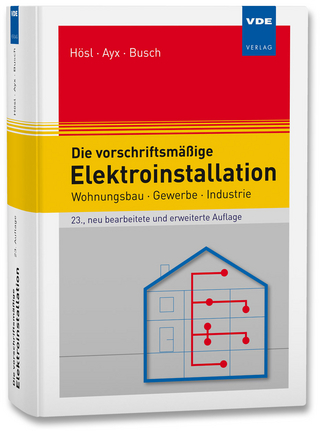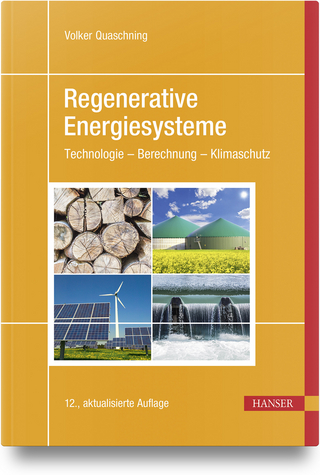
WCDMA for UMTS
John Wiley & Sons Inc (Verlag)
978-0-470-68646-1 (ISBN)
Now in its fifth edition, the bestselling book on UMTS has been updated to cover 3GPP WCDMA and High Speed Packet Access (HSPA) from Release 99 to Release 9. Written by leading experts in the field, the book explains HSPA performance based on simulations and field experience, and illustrates the benefits of HSPA evolution (HSPA+) both from the operators and from the end user?s perspective. It continues to provide updated descriptions of the 3GPP standard including the physical layer, radio protocols on layers 1-3 and a system architecture description. The challenges and solutions regarding terminal RF design are also discussed, including the benefits of HSPA+ power saving features. There is also the addition of a new chapter on femto cells as part of the updates to this fifth edition.
Key updates include:
HSPA evolution (HSPA+);
Multicarrier HSPA solutions;
HSPA femto cells (home base stations);
TD-SCDMA system description;
Terminal power consumption optimization.
Updated description of LTE
Dr. Harri Holma, Principal Engineer at Nokia Siemens Networks, Finland. Antti Toskala, Head of 3GPP Radio Standardization, Nokia Siemens Networks, Finland. Harri Holma and Antti Toskala both work on cutting edge technologies for mobile communications today. They co-edited the books LTE for UMTS - OFDMA and SC-FDMA Based Radio Access, HSDPA/HSUPA for UMTS: High Speed Radio Access for Mobile Communications and WCDMA for UMTS, 4th edition.
Preface xvii
Acknowledgements xix
Abbreviations xxi
1 Introduction 1
Harri Holma and Antti Toskala
1.1 WCDMA Early Phase 1
1.2 HSPA Introduction and Data Growth 2
1.3 HSPA Deployments Globally 4
1.4 HSPA Evolution 5
1.5 HSPA Network Product 6
1.6 HSPA Future Outlook 7
References 8
2 UMTS Services 9
Harri Holma, Martin Kristensson, Jouni Salonen, Antti Toskala and Tommi Uitto
2.1 Introduction 9
2.2 Voice 11
2.3 Video Telephony 18
2.4 Messaging 21
2.5 Mobile Email 22
2.6 Browsing 23
2.7 Application and Content Downloading 24
2.8 Streaming 26
2.9 Gaming 26
2.10 Mobile Broadband for Laptop and Netbook Connectivity 27
2.11 Social Networking 30
2.12 Mobile TV 31
2.13 Location-Based Services 32
2.14 Machine-to-Machine Communications 34
2.15 Quality of Service (QoS) Differentiation 35
2.16 Maximum Air Interface Capacity 40
2.17 Terminals 44
2.18 Tariff Schemes 45
References 45
3 Introduction to WCDMA 47
Peter Muszynski and Harri Holma
3.1 Introduction 47
3.2 Summary of the Main Parameters in WCDMA 47
3.3 Spreading and Despreading 49
3.4 Multipath Radio Channels and Rake Reception 51
3.5 Power Control 55
3.6 Softer and Soft Handovers 57
References 59
4 Background and Standardization of WCDMA 61
Antti Toskala
4.1 Introduction 61
4.2 Background in Europe 61
4.3 Background in Japan 64
4.4 Background in Korea 65
4.5 Background in the United States 65
4.6 Creation of 3GPP 67
4.7 How Does 3GPP Operate? 68
4.8 Creation of 3GPP2 69
4.9 Harmonization Phase 69
4.10 IMT-2000 Process in ITU 70
4.11 Beyond 3GPP Release 99 WCDMA 70
4.12 Industry Convergence with LTE and LTE-Advanced 72
References 73
5 Radio Access Network Architecture 75
Fabio Longoni, Atte Länsisalmi and Antti Toskala
5.1 Introduction 75
5.2 UTRAN Architecture 78
5.3 General Protocol Model for UTRAN Terrestrial Interfaces 80
5.4 Iu, the UTRAN–CN Interface 81
5.5 UTRAN Internal Interfaces 87
5.6 UTRAN Enhancements and Evolution 91
5.7 UMTS CN Architecture and Evolution 93
References 95
6 Physical Layer 97
Antti Toskala
6.1 Introduction 97
6.2 Transport Channels and Their Mapping to the Physical Channels 98
6.3 Spreading and Modulation 102
6.4 User Data Transmission 110
6.5 Signaling 121
6.6 Physical Layer Procedures 126
6.7 Terminal Radio Access Capabilities 136
6.8 Conclusion 138
References 139
7 Radio Interface Protocols 141
Jukka Vialén and Antti Toskala
7.1 Introduction 141
7.2 Protocol Architecture 142
7.3 The Medium Access Control Protocol 143
7.4 The Radio Link Control Protocol 147
7.5 The Packet Data Convergence Protocol 150
7.6 The Broadcast/Multicast Control Protocol 151
7.7 Multimedia Broadcast Multicast Service 152
7.8 The Radio Resource Control Protocol 153
7.9 Early UE Handling Principles 170
7.10 Improvements for Call Set-up Time Reduction 170
References 171
8 Radio Network Planning 173
Harri Holma, Zhi-Chun Honkasalo, Seppo Hämäläinen, Jaana Laiho, Kari Sipilä and Achim Wacker
8.1 Introduction 173
8.2 Dimensioning 174
8.3 Capacity and Coverage Planning and Optimization 194
8.4 GSM Co-planning 202
8.5 Inter-Operator Interference 204
8.6 WCDMA Frequency Variants 210
8.7 UMTS Refarming to GSM Band 211
8.8 Interference between GSM and UMTS 214
8.9 Remaining GSM Voice Capacity 215
8.10 Shared Site Solutions with GSM and UMTS 216
8.11 Interworking of UMTS900 and UMTS2100 217
References 218
9 Radio Resource Management 219
Harri Holma, Klaus Pedersen, Jussi Reunanen, Janne Laakso and Oscar Salonaho
9.1 Introduction 219
9.2 Power Control 220
9.3 Handovers 232
9.4 Measurement of Air Interface Load 246
9.5 Admission Control 250
9.6 Load Control (Congestion Control) 252
References 253
10 Packet Scheduling 255
Jeroen Wigard, Harri Holma, Renaud Cuny, Nina Madsen, Frank Frederiksen and Martin Kristensson
10.1 Introduction 255
10.2 Transmission Control Protocol (TCP) 255
10.3 Round Trip Time 261
10.4 User-Specific Packet Scheduling 264
10.5 Cell-Specific Packet Scheduling 272
10.6 Packet Data System Performance 275
10.7 Packet Data Application Performance 280
References 291
11 Physical Layer Performance 293
Harri Holma, Jussi Reunanen, Leo Chan, Preben Mogensen, Klaus Pedersen, Kari Horneman, Jaakko Vihriälä and Markku Juntti
11.1 Introduction 293
11.2 Cell Coverage 293
11.3 Downlink Cell Capacity 304
11.4 Capacity Trials 313
11.5 3GPP Performance Requirements 330
11.6 Performance Enhancements 334
References 349
12 High-Speed Downlink Packet Access 353
Antti Toskala, Harri Holma, Troels Kolding, Preben Mogensen, Klaus Pedersen and Jussi Reunanen
12.1 Introduction 353
12.2 Release 99 WCDMA Downlink Packet Data Capabilities 353
12.3 The HSDPA Concept 354
12.4 HSDPA Impact on Radio Access Network Architecture 356
12.5 Release 4 HSDPA Feasibility Study Phase 357
12.6 HSDPA Physical Layer Structure 357
12.7 HSDPA Terminal Capability and Achievable Data Rates 365
12.8 Mobility with HSDPA 366
12.9 HSDPA Performance 370
12.10 HSPA Link Budget 380
12.11 HSDPA Iub Dimensioning 382
12.12 HSPA Round Trip Time 384
12.13 Terminal Receiver Aspects 384
12.14 Evolution in Release 6 386
12.15 Conclusion 388
References 388
13 High-Speed Uplink Packet Access 391
Antti Toskala, Harri Holma and Karri Ranta-aho
13.1 Introduction 391
13.2 Release 99 WCDMA Downlink Packet Data Capabilities 391
13.3 The HSUPA Concept 392
13.4 HSUPA Impact on Radio Access Network Architecture 393
13.5 HSUPA Feasibility Study Phase 395
13.6 HSUPA Physical Layer Structure 395
13.7 E-DCH and Related Control Channels 396
13.8 HSUPA Physical Layer Operation Procedure 400
13.9 HSUPA Terminal Capability 402
13.10 HSUPA Performance 403
13.11 Conclusion 408
References 408
14 Multimedia Broadcast Multicast Service (MBMS) 409
Harri Holma, Martin Kristensson and Jorma Kaikkonen
14.1 Introduction 409
14.2 MBMS Impact on Network Architecture 412
14.3 High Level MBMS Procedures 414
14.4 MBMS Radio Interface Channel Structure 415
14.5 MBMS Terminal Capability 418
14.6 MBMS Performance 419
14.7 MBMS Deployment and Use Cases 424
14.8 Benchmarking of MBMS with DVB-H 425
14.9 3GPP MBMS Evolution in Release 7 426
14.10 Why Did MBMS Fail? 426
14.11 Integrated Mobile Broadcast (IMB) in Release 8 427
14.12 Conclusion 428
References 429
15 HSPA Evolution 431
Harri Holma, Karri Ranta-aho and Antti Toskala
15.1 Introduction 431
15.2 Discontinuous Transmission and Reception (DTX/DRX) 431
15.3 Circuit Switched Voice on HSPA 433
15.4 Enhanced FACH and Enhanced RACH 437
15.5 Latency 439
15.6 Fast Dormancy 441
15.7 Downlink 64QAM 442
15.8 Downlink MIMO 444
15.9 Transmit Diversity (TxAA) 447
15.10 Uplink 16QAM 448
15.11 UE Categories 449
15.12 Layer 2 Optimization 450
15.13 Architecture Evolution 451
15.14 Conclusion 452
References 453
16 HSPA Multicarrier Evolution 455
Harri Holma, Karri Ranta-aho and Antti Toskala
16.1 Introduction 455
16.2 Dual Cell HSDPA in Release 8 459
16.3 Dual Cell HSUPA in Release 9 461
16.4 Dual Cell HSDPA with MIMO in Release 9 462
16.5 Dual Band HSDPA in Release 9 463
16.6 Three and Four Carrier HSDPA in Release 10 464
16.7 UE Categories 465
16.8 Conclusion 465
References 466
17 UTRAN Long-Term Evolution 467
Antti Toskala and Harri Holma
17.1 Introduction 467
17.2 Multiple Access and Architecture Decisions 468
17.3 LTE Impact on Network Architecture 470
17.4 LTE Multiple Access 471
17.5 LTE Physical Layer Design and Parameters 476
17.6 LTE Physical Layer Procedures 479
17.7 LTE Protocols 483
17.8 Performance 487
17.9 LTE Device Categories 492
17.10 LTE-Advanced Outlook 492
17.11 Conclusion 494
References 494
18 TD-SCDMA 495
Antti Toskala and Harri Holma
18.1 Introduction 495
18.2 Differences in the Network-Level Architecture 497
18.3 TD-SCDMA Physical Layer 497
18.4 TD-SCDMA Data Rates 504
18.5 TD-SCDMA Physical Layer Procedures 505
18.6 TD-SCDMA Interference and Co-existence Considerations 508
18.7 Conclusion and Future Outlook on TD-SCDMA 512
References 512
19 Home Node B and Femtocells 515
Troels Kolding, Hanns-Jürgen Schwarzbauer, Johanna Pekonen, Karol Drazynski, Jacek Gora, Maciej Pakulski, Patryk Pisowacki, Harri Holma and Antti Toskala
19.1 Introduction 515
19.2 Home Node B Specification Work 517
19.3 Technical Challenges of Uncoordinated Mass Deployment 518
19.4 Home Node B Architecture 519
19.5 Closed Subscriber Group 523
19.6 Home Node B-Related Mobility 524
19.7 Home Node B Deployment and Interference Mitigation 529
19.8 Home Node B Evolution 545
19.9 Conclusion 545
References 546
20 Terminal RF and Baseband Design Challenges 547
Laurent Noël, Dominique Brunel, Antti Toskala and Harri Holma
20.1 Introduction 547
20.2 Transmitter Chain System Design Challenges 549
20.3 Receiver Chain Design Challenges 555
20.4 Improving Talk-Time with DTX/DRX 567
20.5 Multi-Mode/Band Challenges 582
20.6 Conclusion 590
References 590
Index 593
| Erscheint lt. Verlag | 7.9.2010 |
|---|---|
| Verlagsort | New York |
| Sprache | englisch |
| Maße | 175 x 248 mm |
| Gewicht | 1196 g |
| Themenwelt | Technik ► Elektrotechnik / Energietechnik |
| Technik ► Nachrichtentechnik | |
| ISBN-10 | 0-470-68646-4 / 0470686464 |
| ISBN-13 | 978-0-470-68646-1 / 9780470686461 |
| Zustand | Neuware |
| Informationen gemäß Produktsicherheitsverordnung (GPSR) | |
| Haben Sie eine Frage zum Produkt? |
aus dem Bereich


